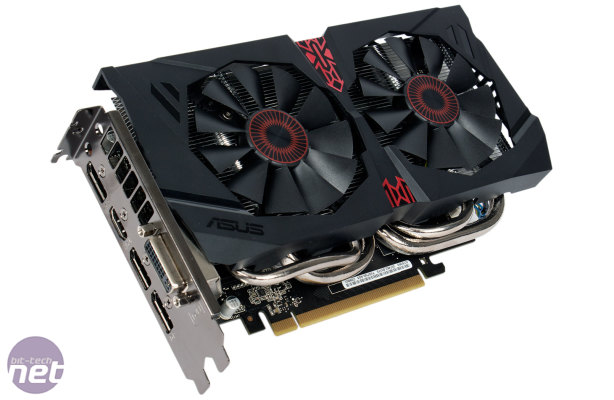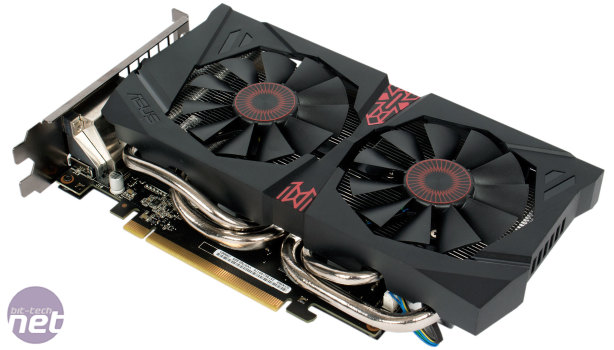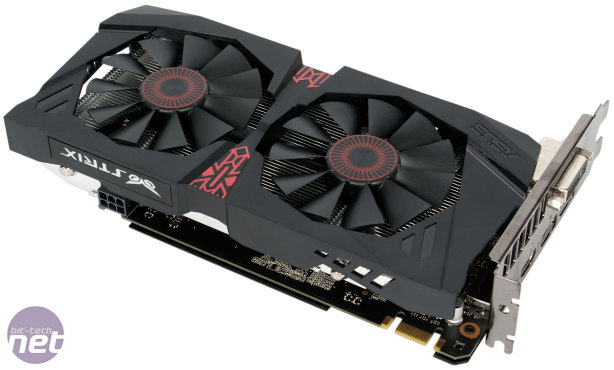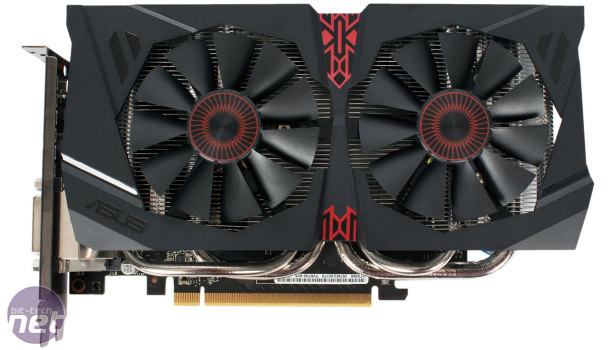Performance Analysis
In Battlefield 4, the Strix GTX 960 manages a smooth minimum frame rate of 41fps at 1080p, which is 4fps ahead of the R9 285. The R9 280, however, is right behind it with 40fps, and is actually quicker by 1fps at 1440p. However, both cards are straddling the line of being playable at this resolution, and you'd need to lower your settings to achieve useful frame rates – you need an R9 280X or GTX 770 to even get 30fps.BioShock Infinite is less demanding, and at full settings the Asus GTX 960 delivers on the 60fps at 1080p promise with a silky smooth minimum of 69fps. This is 8 percent quicker than the R9 280, but this time the R9 285 is right behind it with 67fps. The oveclocked GTX 960 can also run the game at 1440p, getting a minimum of 42fps, but this is the same as both the R9 285 and R9 280X (albeit with a slightly higher average), and only 1fps quicker than the R9 280.
Crysis 3 is our toughest game, but the new Asus card is still capable of 40fps minimum at 1080p. It's here that it holds the strongest lead over the R9 280 as well, with an 18 percent gap. However, it's only 5 percent faster than the R9 285 and no quicker than the R9 280X. At 1440p, it somewhat impressively manages to scrape a 25fps minimum and thus pass the “technically playable” test, which the R9 285 and R9 280 do not do. While this result isn't mind-blowing, it does suggest that the 128-bit interface and 2GB frame buffer isn't really limiting the card, at least not at any realistic resolution.
Skyrim is of course our easiest game to run, and the overclocked GTX 960 sails through with 81fps minimum at 1080p and 57fps minimum at 1440p. However, the R9 285 is quicker in both tests, albeit marginally.
In Unigine, the new Nvidia GPU has a healthier lead over the AMD hardware, but remember the green team always does better in this benchmark. Still, at both 1080p and 1440p the Asus card is around 20 percent quicker than the R9 280 and R9 285.
Across all of our game and synthetic tests, the Strix GTX 960 is 40 percent quicker than the GTX 660 and 9 percent quicker than the GTX 760 on average. Remember, however, that we're looking at a SKU with an 11 percent overclock – at reference clocks the differences will be less, and the GTX 760 is likely a good indicator of reference performance.
The efficiency over AMD hardware is clear from the power consumption charts. 244W total system consumption is admittedly higher than we were expecting – Asus's own GTX 970 DirectCU II Mini only took it to 264W – but this is likely a result of the overclock skewing the results slightly, as the GTX 660's result is 227W. Still, compared to the R9 270, the fastest AMD card with a single 6-pin connection, it only consumes 5W more, yet it's in another league in the benchmarks. Its closest performance competitors, meanwhile, the R9 280 and R9 285, have results closer to 300W, while stepping up to the R9 280X adds a further 50W to that.
The combination of low power consumption and an excellent cooler sees the Asus card run with fantastically low temperatures – it manages a delta T of just 37°C, which is almost as low as the liquid-cooled R9 295X2 cores and cooler than a stock GTX 750 Ti. With its fans spinning, it produces very little noise – we couldn't hear it over our system. It switches to passive mode almost instantly after exiting a game, at which point it idles at a very healthy temperature too.
The overclocking results are pretty good as well, with improvements of between 7 and 13 percent, depending on the benchmark. In Battlefield 4, it can't improve its standings, but it does overtake the R9 280X in Crysis 3. As we've come to expect from Maxwell, the overclock is very efficient too. Power consumption rose by just 11W, while the temperature went up 1°C and the fan speed by an imperceptible 50 RPM or so – there's no reason not to squeeze all the performance you can from this card.

MSI MPG Velox 100R Chassis Review
October 14 2021 | 15:04













Want to comment? Please log in.